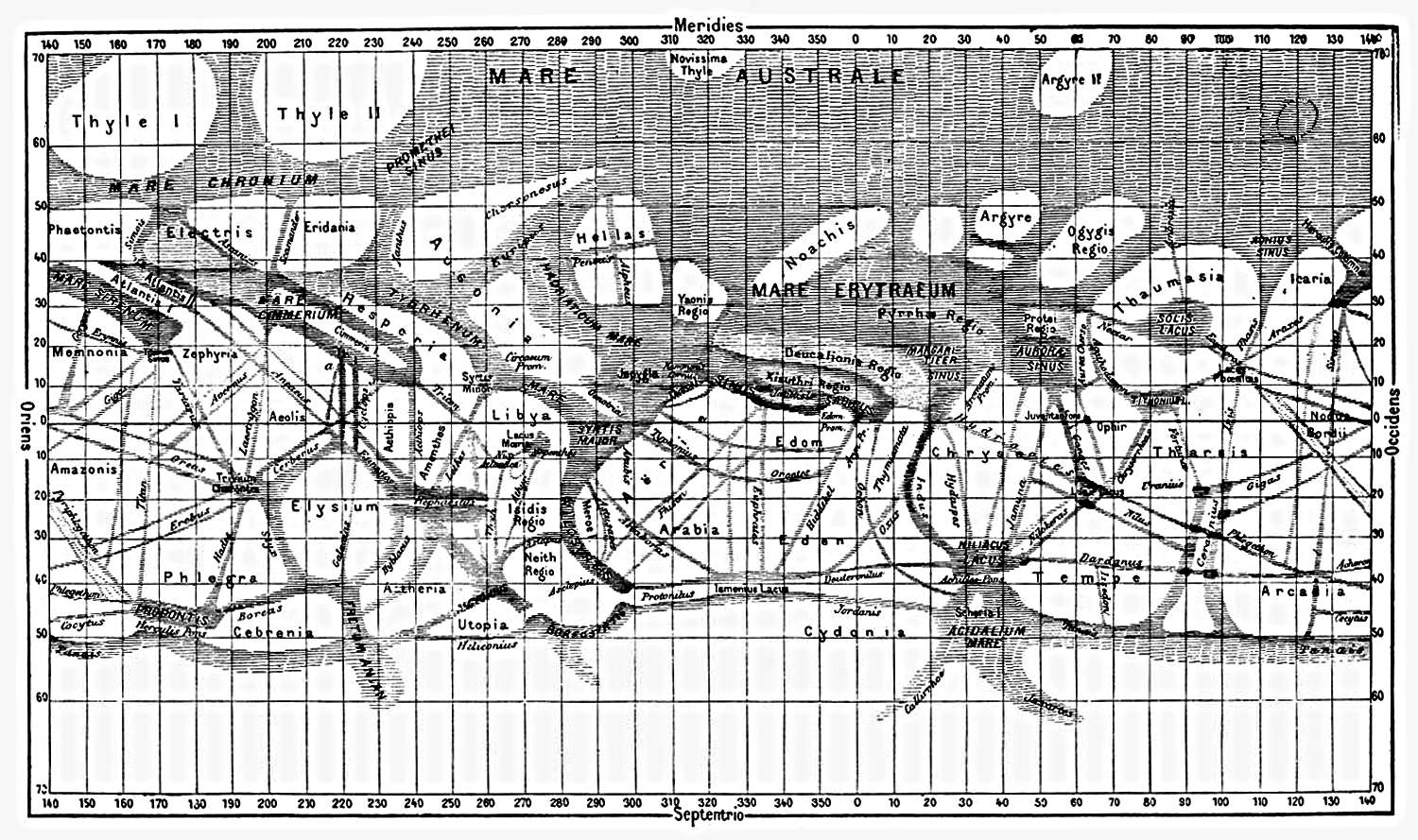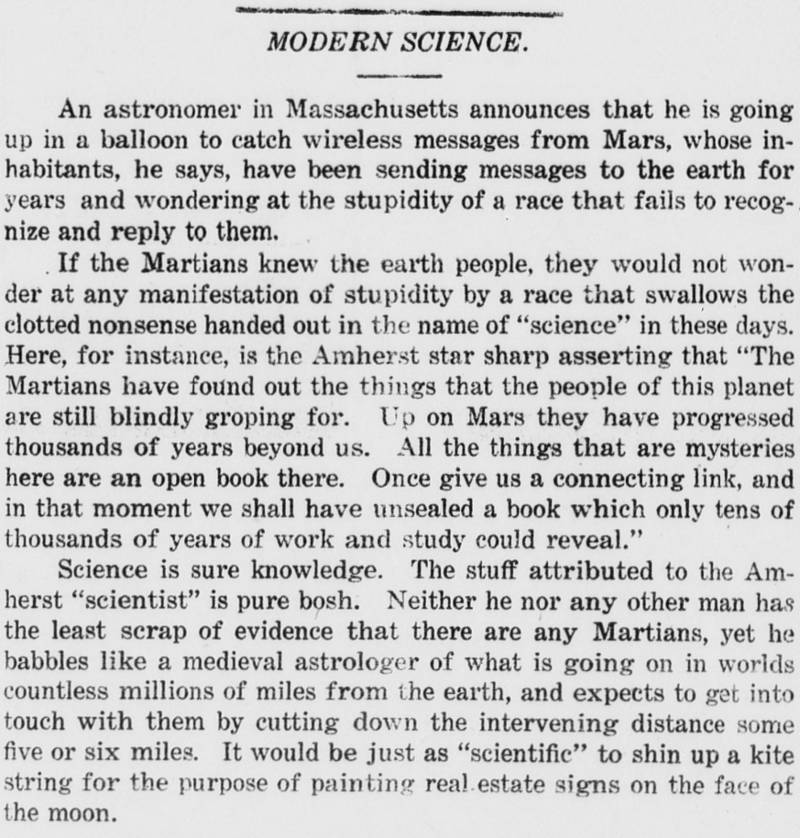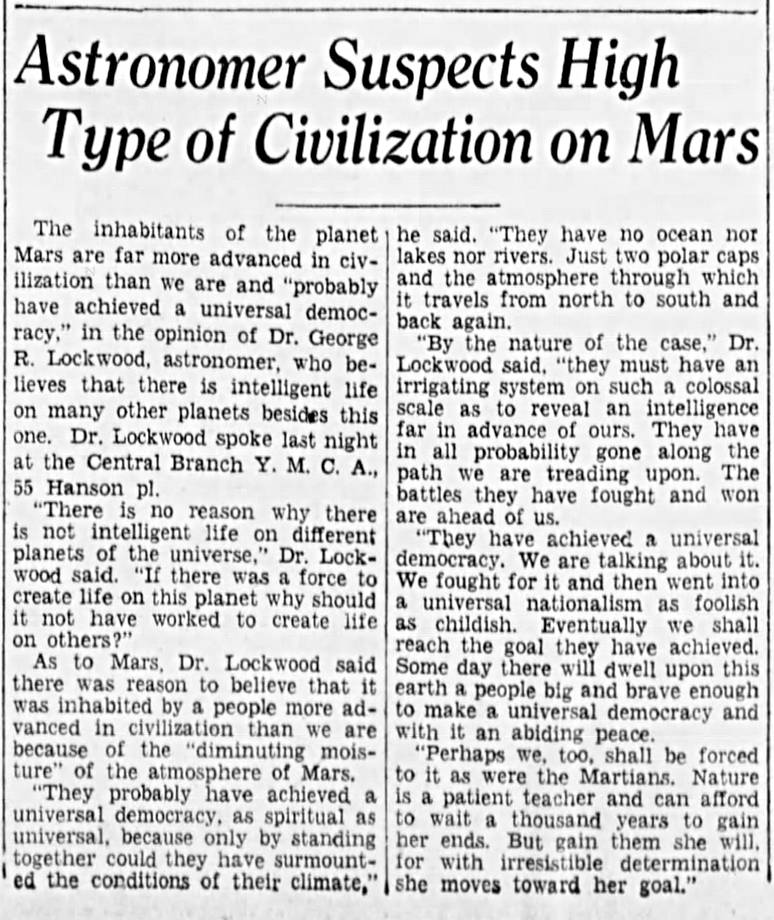“It is, then, a system whose end and aim is the tapping of the snow-cap for the water there semi-annually let loose ; then to distribute it over the planet’s face” – Percival Lowell (1855-1916)
His reasoning for the canals being artificial were such:
1) Their straightness
2) Their individually uniform size.
3) Their extreme tenuity.
4) The dual character of some of them.
5) Their position in the fundamental planetary features.
6) Their relation to the oases.
7) The character of these oases.
8) The systematic networking by both canals and oases of the whole surface of the planet.
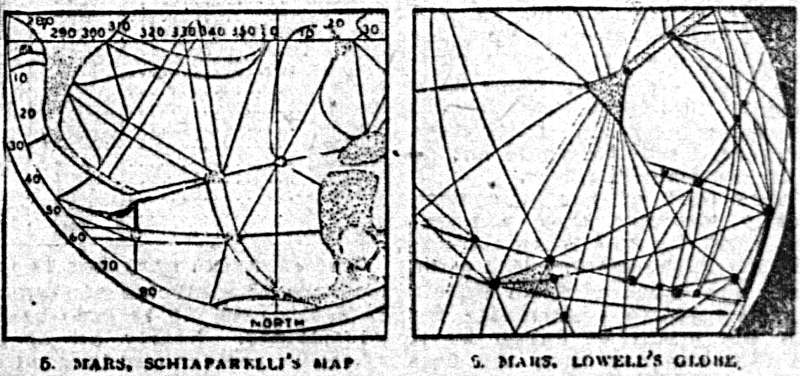 The San Francisco Sunday Call, January 06, 1907
The San Francisco Sunday Call, January 06, 1907
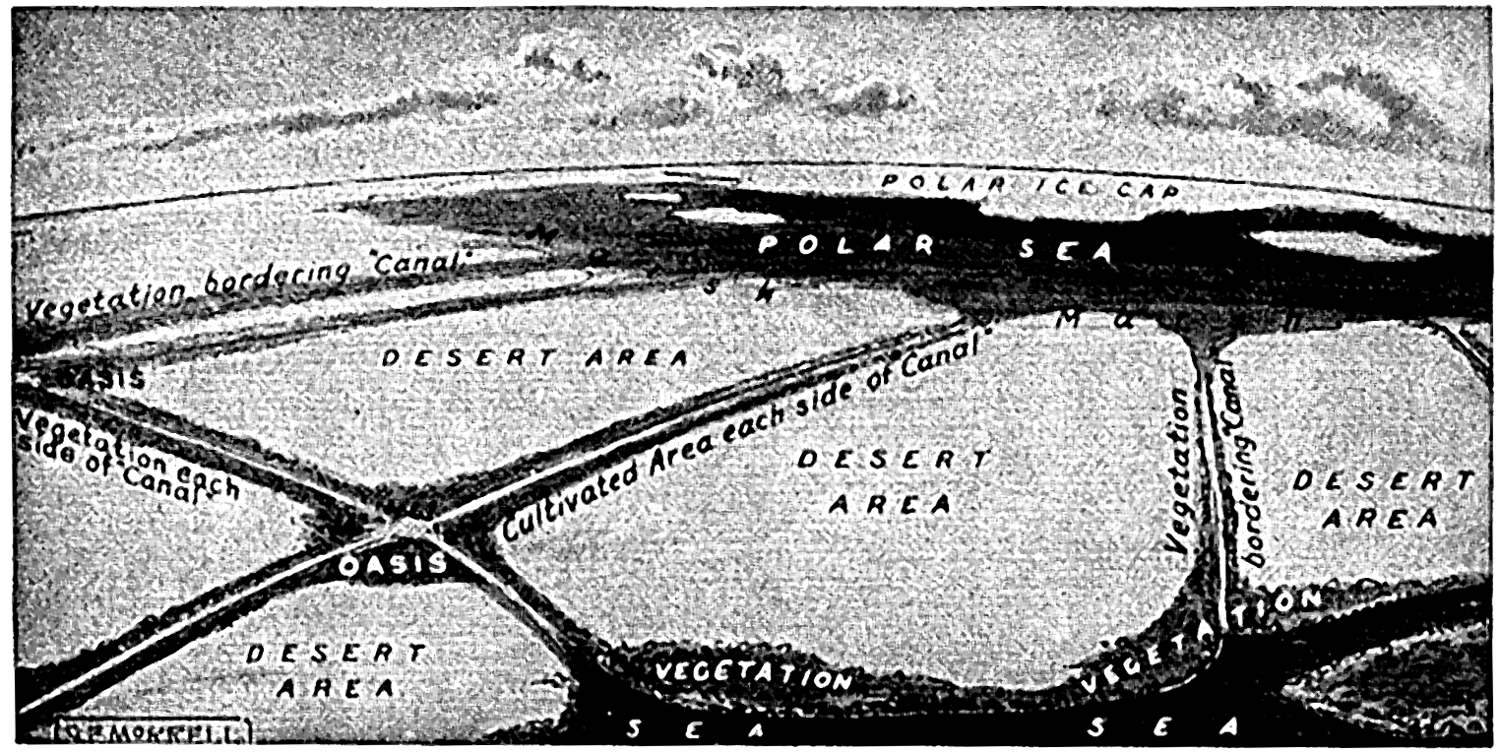 The Book of Knowledge: The Children’s Encyclopedia. Volume 9 McLoughlin E.V., Thompson H. 1943.
The Book of Knowledge: The Children’s Encyclopedia. Volume 9 McLoughlin E.V., Thompson H. 1943.
